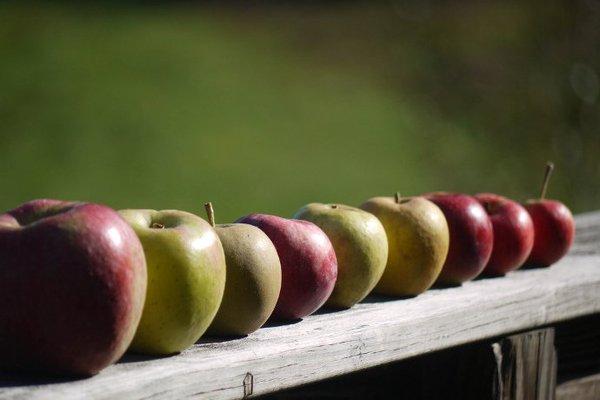
 Hard cider, the boozy cousin of apple juice, is muscling in on microbreweries, boutique wineries and small-batch distillers as the latest craft brew to make a big splash in the liquor industry.
Hard cider, the boozy cousin of apple juice, is muscling in on microbreweries, boutique wineries and small-batch distillers as the latest craft brew to make a big splash in the liquor industry.
Hard cider is not beer: it does not contain any malt. It is not wine, even though it is classified with wine by federal liquor regulators: it has much less alcohol content and less sugar than most wines. And it doesn't much resemble sweet apple juice: it is usually made from cider apples so nasty-tasting they are called "spitters." One thing it does have in common with microbrews is crafty and creative names like Crabby Neighbor, Old Stumpy and One Night Fruit Stand.
There are now more than 600 cideries in 44 states. In Colorado, ciderpreneurs have opened 20 cideries. More are on tap.
The new popularity of hard ciders is linked to the farm-to-table and the locavore movements. The term "artisanal" is often applied to today's ciders. Cider snobs search for the best single-tree and tree-to-table ciders. They also flock to cider tastings to share the same terms of terroir, base-notes and aroma that apply to wine tasting. Magazines like Bon Appetit and Esquire are giving hard cider cred by running hard cider reviews.

And it doesn't hurt in a grain-averse age that cider is naturally gluten-free.
Novice hard cider drinkers may be surprised to find ciders really can have the complexities of wine. Cider experts recommend tasting ciders just as one would wine: sniff, swirl, sip, swish, and if you are tasting many ciders, spit.
Brad Page, co-owner of the Colorado Cider Company , and Jay Kenney, CEO of Clear Fork Cider, talk with Colorado Matters Host Ryan Warner about the history, and the future, of hard cider and this exploding niche in the adult-beverage industry.
Some qualities to look for in cider tasting:
- Clarity and color. Cider can be clear or hazy and can range in color from white to copper.
- Aromatics and aromas. There are dozens of fruit aromas to sniff for. They can range from wine-like to yeasty. Ciders can be perfumed or tangy smelling in the glass and may carry the odor of a variety of fruits from pear to pineapple and dried figs to raisins.
- Flavors. As with wines, cider drinkers may pick up dozens of somewhat mysterious tastes. Think of fresh cut grass, marzipan, butterscotch, cedarwood or licorice, to name just a few. On the not-so-good end, ciders can have tastes that recall a rodent's den, damp cardboard or bubblegum.
- Mouthfeel. Ciders can feel heavy or creamy in the mouth. They can also have a mouth-puckering astringency or can be fiery in the back of the throat.
Jay Kenney's Recommended Cideries
- Etienne Dupont, Normandy, France
- Farnum Hill, Lebanon, New Hampshire
- JK's Farmhouse Cider, Flushing, Michigan
- Citizen Cider, Burlington, Vermont
- Reverend Nat's Hard Cider, Portland, Oregon
- Anything made here in Colorado
Related:








